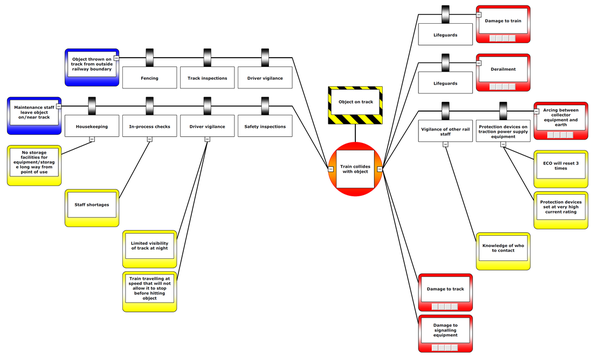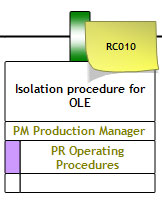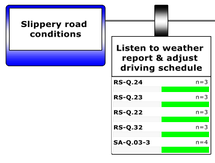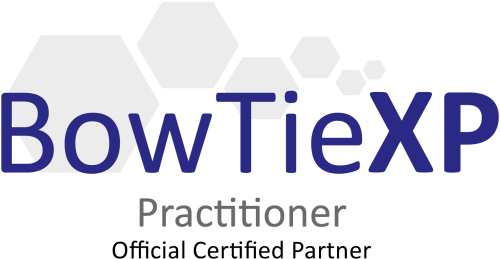Bowtie risk assessment method
|
The bowtie method of risk assessment creates diagrams that visualise the risk you are dealing with in a single clear picture. The diagram is shaped like a bow tie, with the 'knot' showing the point where control over a hazard is lost. To the left of the 'knot' the threats and the measures to control them are shown. To the right are the possible consequences of the hazard scenario, along with the possible control measures to limit or nullify them.
The bow tie therefore creates a picture of risk that is easy to understand and for groups to contribute to. The bow tie methodology was developed in the offshore oil and gas sector in the 1990s. Today it is used by organisations including the Office of Rail and Road, the Civil Aviation Authority and the Military Aviation Authority. Bowtie risk models are likely to be a key part of Building Safety Cases for Higher Risk Residential Buildings (HRRBs) which will need to be submitted to the Building Safety Regulator, as part of the new Building Safety Act in the UK. In this particular case, bowtie risk models can you help to understand how:
We work with your team to help them understand the threats, consequences and control measures and plot these in bowtie models. We can also provide training on how to apply the method in your workplace. We can also provide training in using the bowtie methodology.
| ||||||||||
|
Visualise barrier effectiveness
Colour-code the barriers to show how effective you believe they are. Show the barrier type and who is responsible for maintaining it Having different barrier types will increase the system's robustness. Showing who is responsible makes it clear what everybody is supposed to do to operate safely. Show recommendations from reports and investigations Bowties can show which controls need to be implemented (or strengthened) as a result of investigations, or where the bowtie has highlighted areas where organisational control is weak. Show audit results Identify how a control will be checked during audit, and the results of the audit. Barrier-based audits provide a more targeted approach to auditing. |
Use the leading software to produce bowtie risk diagrams
BowTieXP is the most used risk assessment software that is based on the bowtie method. It is produced by Wolters Kluwer and enables you to easily create bow tie diagrams to assess risk. BowTieXP is unique in its ability to visualize complex risks in a way that is understandable, yet also allows for detailed risk-based improvement plans.
AuditXP is an audit and compliance software tool, employing the same software framework as BowTieXP. The tool is developed to close the “Plan-Do-Check” circle (Deming circle). After defining the barriers in your safety management system (the plan stage) and implementing them (the do stage), AuditXP is used to check and monitor the quality and effectiveness of the barriers.
Silver Moor Business Consulting has been appointed as a value-added and expert agent globally for Wolters Kluwer to provide BowTieXP, AuditXP, training and consultancy for the bowtie methodology.
AuditXP is an audit and compliance software tool, employing the same software framework as BowTieXP. The tool is developed to close the “Plan-Do-Check” circle (Deming circle). After defining the barriers in your safety management system (the plan stage) and implementing them (the do stage), AuditXP is used to check and monitor the quality and effectiveness of the barriers.
Silver Moor Business Consulting has been appointed as a value-added and expert agent globally for Wolters Kluwer to provide BowTieXP, AuditXP, training and consultancy for the bowtie methodology.
Logos and trademarks are the property of Wolters Kluwer and used by permission.
Downloads
| Railway shunting operations bow tie risk assessment | |
| File Size: | 216 kb |
| File Type: | |
If you'd like us to talk to you about how we may be able to help, please Contact Us.






